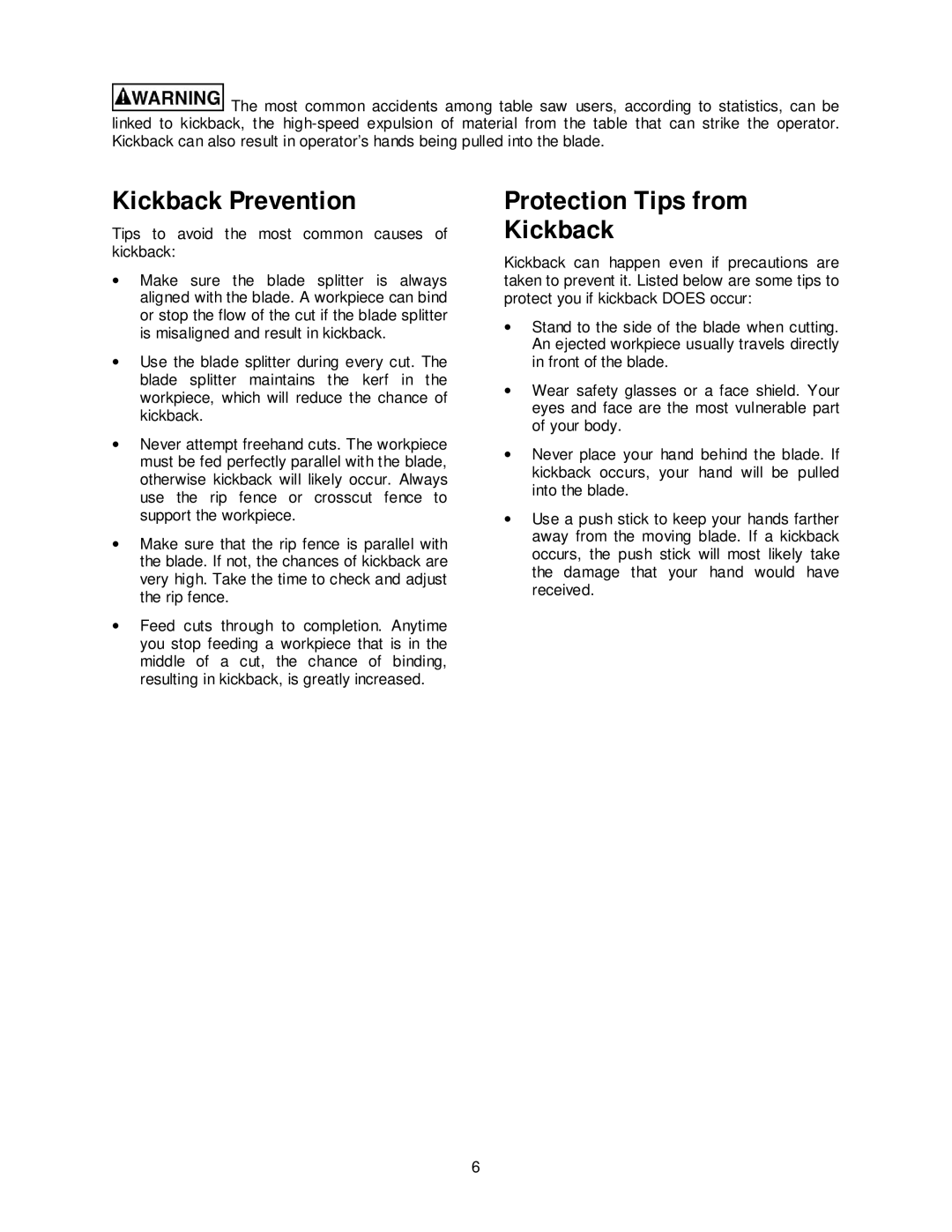![]() The most common accidents among table saw users, according to statistics, can be linked to kickback, the
The most common accidents among table saw users, according to statistics, can be linked to kickback, the
Kickback Prevention
Tips to avoid the most common causes of kickback:
•Make sure the blade splitter is always aligned with the blade. A workpiece can bind or stop the flow of the cut if the blade splitter is misaligned and result in kickback.
•Use the blade splitter during every cut. The blade splitter maintains the kerf in the workpiece, which will reduce the chance of kickback.
•Never attempt freehand cuts. The workpiece must be fed perfectly parallel with the blade, otherwise kickback will likely occur. Always use the rip fence or crosscut fence to support the workpiece.
•Make sure that the rip fence is parallel with the blade. If not, the chances of kickback are very high. Take the time to check and adjust the rip fence.
•Feed cuts through to completion. Anytime you stop feeding a workpiece that is in the middle of a cut, the chance of binding, resulting in kickback, is greatly increased.
Protection Tips from
Kickback
Kickback can happen even if precautions are taken to prevent it. Listed below are some tips to protect you if kickback DOES occur:
•Stand to the side of the blade when cutting. An ejected workpiece usually travels directly in front of the blade.
•Wear safety glasses or a face shield. Your eyes and face are the most vulnerable part of your body.
•Never place your hand behind the blade. If kickback occurs, your hand will be pulled into the blade.
•Use a push stick to keep your hands farther away from the moving blade. If a kickback occurs, the push stick will most likely take the damage that your hand would have received.
6
